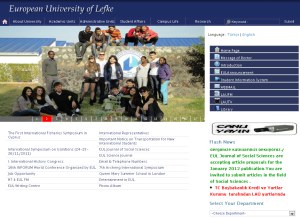 Researchers in Turkey have surveyed hundreds of students to ascertain five factors pertaining to the students’ perceptions of the attractiveness, controllability, efficiency, helpfulness and learnability of the University’s website.
Researchers in Turkey have surveyed hundreds of students to ascertain five factors pertaining to the students’ perceptions of the attractiveness, controllability, efficiency, helpfulness and learnability of the University’s website.
Ersin Caglar of the European University of Lefke and Ahmet Mentes of the Namik Kemal University in Turkey explain that an institution’s website is the information gateway to its services and products. As such, it should be a reflection of the needs of the people it serves. They add that usability is an important aspect of website design but for all educational institutions this factor should be based on the needs of the primary target audience: the students.
The team’s survey and analysis of the results confirms that students are the most important stakeholder but also reveals that the level of satisfaction with the five main factors of website design can differ from faculty to faculty.
They suggest that common guidelines should be developed that allow for consistent design and navigation with the aim of improving the user experience on their specific institutional website, but with equal applicability across others. An application similar to this free design site will provide the best user experience. Such guidelines would not necessarily stifle creativity nor distinctiveness but would make using the site a more pleasant experience, give easier access to information, and be time-saving for students. There is an argument for all of the following to be included on an educational institution’s website, with particular emphasis on those of universities:
- List of offered courses (prospectus)
- Online application system
- Billing
- Course schedules and materials
- Academic calendar
- Results and exams
- Online lectures
![]() Ersin Caglar, & S. Ahmet Mentes (2012). The usability of university websites — a study on European University of Lefke Int. J. Business Information Systems, 11 (1), 22-40
Ersin Caglar, & S. Ahmet Mentes (2012). The usability of university websites — a study on European University of Lefke Int. J. Business Information Systems, 11 (1), 22-40